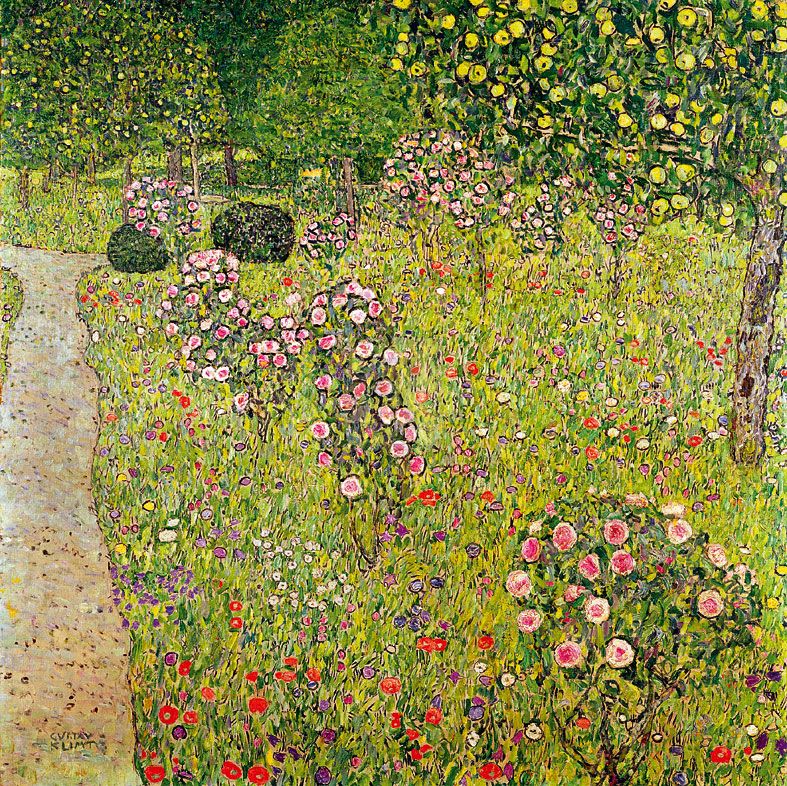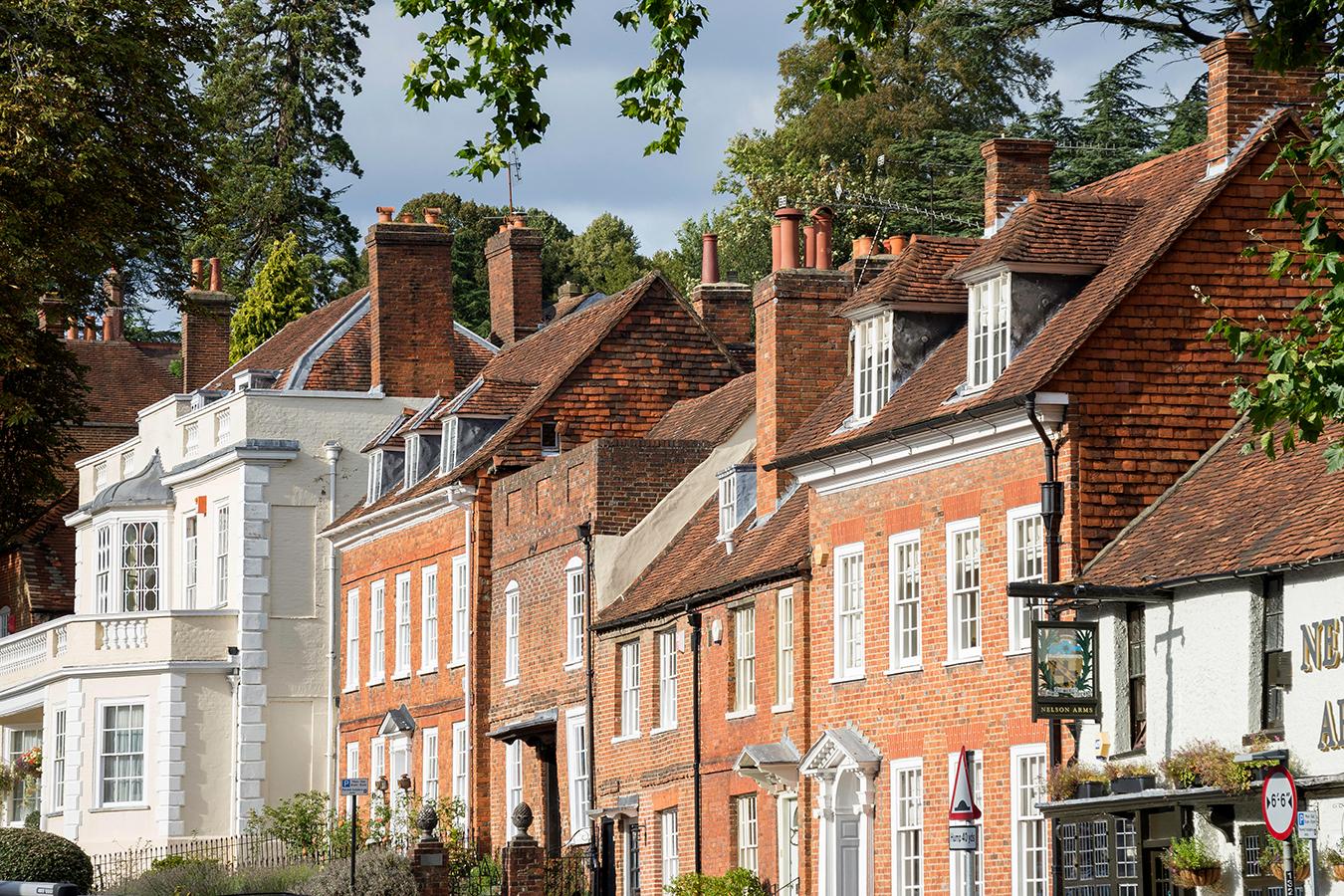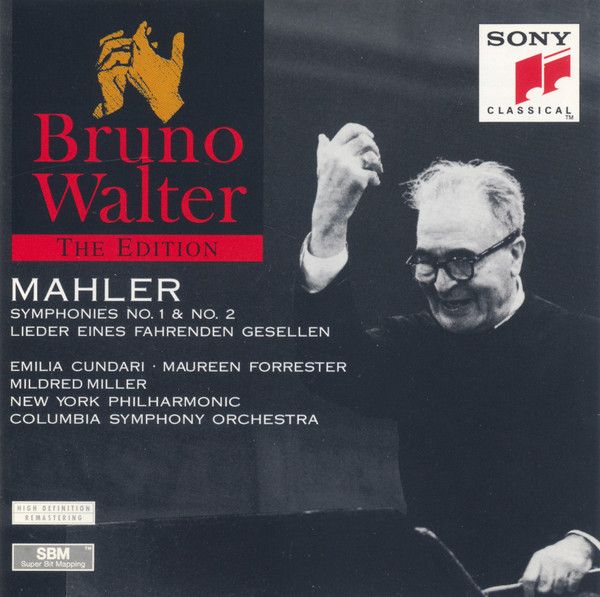SPRING TORRENTS & MAHLER'S 1ST

Mahler's 1st symphony is as perfect a soundtrack for Spring as you'll ever find. It has that rambunctious energy of March winds followed by April's showers and all the sunshine in between.
Though I was studying film at university the first time I discovered Mahler's music, I now look back at that time in amazement of my own self-initiated cultural curriculum that spontaneously led me to the most amazing worlds of enchantment, cultural histories and timeless nostalgia.
Or, in other words, I had an uncanny ability to do anything but the work that was required of me. Layabouts can often be hugely industrious when avoiding everything but the one thing they're meant to be focusing on.
I remember before returning to university after Christmas, watching a six part BBC series with Gorodish in his Parisian style apartment entitled Great Composers, narrated by Kenneth Branagh. I found the Mahler episode especially fascinating as it made a compelling case to the viewer and the uninitiated just how complex and dynamic Mahler's music is, even though it can often be simultaneously wrapped in some of the sweetest and most cloying symphonic music ever composed. In addition, the dichtomy of a late romantic composer who also happened to be a spiritual szhizophrenic also somehow greatly appealed to me as someone who has often flitted between Christianity, Buddhism and, dare I say, death fearing agnoticism
Having then been immediately compelled to further explore the works of the Austro-Bohemian Gustav Mahler, I quickly sought out a record shop in my university town to see what CDs of his symphonies I could find. As you might imagine, all pressing course assignments were temporarily paused in light of my newfound Mahler obsession.

Ben's Collector's Records in Farnham back in the late 1990's was possibly the greatest Aladdin's cave of music I'd found outside of Tower Records in Picadilly Circus, London and Times Square, New York. It was jam packed with incredible music, especially classical, jazz and obscure film soundtracks. And Richie (the lawyer in training) behind the counter didn't let me down. Not that he had any real knowledge of Mahler recordings per se, he was more of a jazz man but handed over what he had available in stock, which was decent, if not as abundant as I'd hoped for. If you didn't know already, I was a more is more type of chap back then. Still am.
Working through the small stack of Mahler CDs, I instinctively went with my gut and decided to chalk up the first of my Mahler collection with Bruno Walter's recording of symphonies 1 & 2 with the Columbia Symphony Orchestra on Sony.

I can remember that very first time listening to the 1st symphony having returned from the town to my student rented room in Trebor Avenue. I lived there with a crotchety landlady called Mrs Barnes who had nothing whatsover to be crotchety about, except perhaps old age which she appeared to be handling more than adeptly. Her house was a dream of post Edwardian dimensions and her garden as perfect as one could ever hope for. As grumpy as she mostly was throughout the year, Spring was perhaps the only time I remember her being truly happy, mowing her lawn with great purposeful strides as she created rows of light and dark patterned grass.
From the opening movement of the 1st symphony the promise of Spring is tangible. Ethereal strings sustain a near imperceptible A with what sounds like misty sunshine on hazy dew at first dawn as the sound of a nearby cuckoo is mimicked by a clarinet. Slowly then, the first carriage wheels of Spring turn into a spritely dance of rhythm with undulating cellos that resemble the chassis and running gears of the undercarriage. When the full riot of Spring is finally unleashed in a frenzy of cascading strings and rising trumpets, it's as if Mahler has musically outdone the season of renewal itself.
With the sound of the landlady's lawnmower whirring like helicopter blades in the background, I sat in my room listening to Mahler's 1st for the first time, which coincided perfectly with the arrival of Spring and I felt that same giddy feeling one feels with a first crush. It was as if I'd been waiting for Mahler my entire life and now I had been introduced, a lifetime of infatuation began. It still hasn't diminished one iota as I sit here tranced out in a reverie of bliss listening to it for the hundreth time. The symphony is what I imagine a Spring orientated bath bomb would fizz like if dropped into a hot bath. Strange analogy perhaps but it really does have an effervescent energy all of its own and can re-energise even the tiredest of souls from post winter malaise.
Discovering Mahler in your late teens/early 20's seems a perfect alignment as the Wunderhorn Mahler symphonies (1-4) encapsulate the very essence of youth and vigour before the transition into the more ill fated late symphonies (6-9) cast their deathly sunset over his entire symphonic canon.
As the continued momentum of the first movement extends into the second with bounding energy, there is no indication whatsoever at this point in the symphony of the famed Mahler neurosis in the work.
That is until the third movement where the cuckoo like clarinet has now been replaced by a more staccato sounding oboe which plays at a funereal pace and sounds considerably more sombre and formal.
The framework of the slow introductory theme to this third movement is based on the children's lullaby Bruder Jakob (otherwise known as Frere Jacques) and slowly from its initial dirge-like refrain it breaks out into a more elaborate lilting Klezmer swing with additional cymbals, bass drum, clarinets and trumpets creating an almost jaunty like procession cum celebration before returning to the slow, tyrannous tread of the opening theme.
What happens from there is something quite magical as the processional music dissolves into a sweeter more reflective theme. The new melody that emerges here is yet another quotation, "My Sweetheart's Two Blue Eyes" from Mahler's own Wayfarer song cycle and evokes a more hushed and romantic atmosphere. The shadow of death continues to lurk in the wood wind but never enough to truly disturb the new found idyll. Sadly, the hopeful theme doesn't last for long before returning to the A-B-A structure that began the movement. If there was ever a foreshadowing for what was to come later in Mahler's symphonic works, then it is all here in the third movement of the 1st.
I could hear Mrs Barnes throttling the engine of her lawnmower for a brief second before the quiet, unsettled atmosphere of the third movement is then broken violently by a torrent of orchestral drama in the fourth movement that refuses to settle as it searches for its culminative theme of the entire symphony to secure itself to. After much frenzied searching, it eventually finds its noble, triumphant theme in D to finally resolve the piece which is considered to represent a “breakthrough” from hell to the sphere of paradise.
As I opened my eyes I realised the lawnmowing outside had stopped and I was surrounded by that same spiritual silence one finds after listening to sacred music in a cathedral.
Somehow I sensed that after this, nothing would be the same again.
Mahler had arrived in my life and the crazy bastard would be coming along with me through all the madness of my own life.
And Spring is now never complete without listening to his 1st symphony, to say nothing of 2, 3 and 4. For contrary to the outdoor purists, I believe even nature sometimes needs a soundtrack reflected back at it and Mahler reflected it better than anybody.